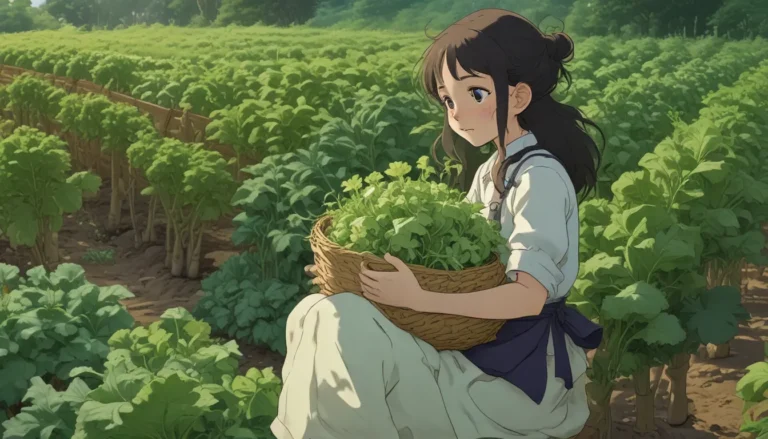Everything You Need to Know about Growing and Caring for Peach Trees

When it comes to fruit trees, peaches are a close rival to the ever-popular apple trees. With their tender, rich, and juicy fruits that are often hard to come by in grocery stores, it’s no wonder why more people are turning to growing their own peach trees in their gardens.
If you’re considering adding these delightful trees to your garden, it’s essential to understand how to care for and grow them successfully. While it may present some challenges, with the right know-how and a bit of dedication, you can soon enjoy homegrown peaches dripping with flavor.
In this comprehensive guide, we’ll cover everything you need to know about cultivating and caring for peach trees. From the history and cultivation of these trees to pruning, selecting cultivars, managing pests and diseases, harvesting, preserving, and even some delicious recipes and cooking ideas, we’ve got you covered!
What You’ll Learn
To get started, let’s dive into what you’ll learn throughout this guide:
- Cultivation and History
- Propagation
- How to Grow
- Growing Tips
- Pruning and Maintenance
- Cultivars to Select
- Managing Pests and Disease
- Harvesting
- Preserving
- Recipes and Cooking Ideas
- Quick Reference Growing Guide
Peach trees typically thrive in Zones 4 to 9, with certain cultivars performing exceptionally well in Zones 6 and 7. Varied selection is crucial based on regional differences, ensuring optimal growth and fruit production. While peach trees are self-pollinating, planting multiple cultivars can extend the harvest season, providing you with fresh peaches from early spring to late summer.
It’s also worth noting that nectarines share many characteristics with peaches and can often be cultivated similarly. Culturally, nectarines are closely related to peaches, with the main distinction being the lack of fuzz on the skin and variations in color.
Cultivation and History
The peach tree, scientifically known as Prunus persica, is indigenous to northwest China and has been cultivated in the region for centuries. The cultivation of peaches dates back at least 4,000 years, with genetic evidence suggesting cultivation even earlier.
China remains one of the largest producers of peaches and nectarines globally, with the fruit being introduced to Japan around 4000 BC and India around 1700 BC. The cultivation of peaches spread to Europe, carried by Alexander the Great and his armies.
The delightful blossoms produced by peach trees come in various shades of orange, red, pink, and violet, adorning branches even before the leaves emerge. The fruits, known as stone fruits or drupes, derive their name from the hard, stony covering around the seed.
While peaches may taste like candy, they offer numerous health benefits, including antioxidants and anti-inflammatory properties. The flavor of the fruits can be categorized based on the flesh color, with yellow flesh being more acidic and white flesh being sweeter.
Peach trees develop fruiting buds in late summer, remaining dormant until experiencing a specific number of cool days to initiate fruit development. Mature fruits require temperatures above 68°F to ripen fully.
Propagation
Peaches are best propagated through cuttings or purchasing plants. While growing a fruit-bearing tree from a peach pit is feasible, the resulting tree may not yield the exact same type of peach consumed initially.
Experiments in hybridization and new variety creation can be rewarding but require patience as the plant matures. Commercially grown peach trees are often grafted onto hardy rootstock to enhance tree vigor and growth containment.
Cuttings taken during the summer months can facilitate successful propagation. Hardwood and semi-hardwood cuttings are common methods of asexual reproduction, resulting in exact replicas of the parent tree.
Semi-hardwood cuttings should be taken in early summer, and hardwood cuttings during the dormant season in late winter. Placing the cutting in rooting hormone and preparing the soil adequately can lead to successful root development.
From Seedlings/Transplanting
When transplanting peach trees, early spring is the ideal time, ensuring the tree is fully dormant. Planting techniques involve proper root ball handling, positioning in the hole, filling with soil, and appropriate watering post-planting.
Transplanting a tree with new growth may delay fruit production. Special attention to root ball structure and soil depth is crucial for ensuring tree health and avoiding stress. Situating grafted plants to maintain the desired graft union height is essential.
Properly watering newly planted trees, removing air gaps, and soil leveling contribute to successful tree establishment and growth.
How to Grow Peach Trees
Selecting the right location plays a crucial role in the successful growth of peach trees. Flowering earlier than other fruit trees, peaches may be vulnerable to late-season freezes, necessitating planting near heat-reflective structures or sloped areas to mitigate frost risks.
Sun exposure is key for peach tree growth, with full sun being a necessity for optimal fruit production. Selecting well-drained soil with a sandy loam texture and a pH range of 6.5 to 7 is essential for tree health.
Additional soil amendments, particularly well-rotted compost, can enhance nutrient content and improve soil drainage for better tree development. Proper spacing, watering practices, and fertilization contribute to tree health and fruit production.
Fertilizing
Young trees up to five years of age benefit from annual fertilization with a granulated 10-10-10 NPK fertilizer applied in early spring and early summer. Adjusting fertilizer amounts as the tree matures is crucial for maintaining tree health and promoting fruit production.
Periodic soil testing can inform custom fertilization plans based on soil nutrient content, ensuring optimal tree growth and fruit development. Addressing iron deficiency, common in some areas, is crucial for healthy tree development.
Growing Tips
- Plant in full sun, preferably at the top of a sloping area.
- Trees need about three inches of water per month, with more in summer and less in winter.
- Feed twice a year with granulated 10-10-10 NPK fertilizer.
Pruning and Maintenance
Critical for optimal fruit production, pruning peach trees to maintain a vase or open center shape promotes fruit development. Proper pruning techniques involve shaping young trees, maintaining branch spacing, and removing diseased or overcrowded branches to support fruit growth.
Pruning practices should focus on shaping the tree to encourage healthy growth and improve fruit accessibility. Tree maintenance includes routine pruning, thinning excess fruit to ensure quality fruit development, and using appropriate tools for fruit harvesting.
Utilizing fruit pickers, such as the Eversprout model, can simplify fruit harvesting and reduce the risk of injuries. The importance of tree thinning and maintenance practices cannot be overstated for ensuring fruit quality and avoiding damage.
Cultivars to Select
With numerous peach cultivars available, selecting the right variety is crucial for successful tree growth and fruit production. Regional considerations, chilling hour requirements, fruit characteristics, and disease resistance should inform cultivar selection.
Winter-hardy and region-specific cultivars offer advantages in preventing frost damage and ensuring consistent fruit production. Differences in chilling hour requirements among cultivars demand careful consideration to avoid premature blooming or frost risks.
Bonfire
- True dwarf peach tree.
- Fragrant double flowers and burgundy foliage.
- Ideal for small spaces, producing subacid fruits.
Elberta
- Highly popular and disease-resistant peach cultivar.
- Sugar-sweet freestone fruits with yellow and red skin.
- Ready for harvest in late July, thriving in Zones 5-8.
Golden Jubilee
- Juicy, freestone peaches with golden-red skin.
- Disease-resistant and cold-hardy in cooler climates.
- Requires 850 chill hours for optimal production.
Hale Haven
- Frost-tolerant and bruise-resistant peach cultivar.
- Large, freestone fruits with golden flesh.
- Self-pollinating and ready for harvest in early September.
White Lady
- Early-producing peach cultivar with pale blush fruits.
- Subacidic and sweet peaches ideal for fresh eating.
- Great for Zones 5-8 with a shorter time to maturity.
Managing Pests and Disease
Despite the flavorful rewards of growing peach trees, they’re susceptible to various pest and disease issues that can impact fruit quality and tree health. Knowledge of common pests and diseases, preventive measures, and appropriate pest and disease control strategies is essential for preserving tree health and promoting fruit production.
From herbivores like squirrels, rats, and birds to insect pests including aphids, earwigs, Japanese beetles, peach tree borers, and more, a proactive approach to pest management is crucial. Implementing preventive measures, spraying targeted insecticides, and monitoring tree health can help manage common pests effectively.
Various diseases such as bacterial canker, brown rot, powdery mildew, and peach scab pose threats to peach trees and fruit quality. Prevention strategies involving proper pruning, sanitation, and fungicidal treatments can help control disease spread and protect tree health.
Summary
With its rich history, varied cultivars, and unique challenges, growing and caring for peach trees can be a rewarding experience for home gardeners. By understanding the cultivation practices, pruning techniques, cultivar selection criteria, pest and disease management strategies, and harvesting and preserving methods, you can unlock the full potential of your peach trees and enjoy the luscious fruits they bear.
From juicy fresh peaches to baked treats, savory dishes, and homemade preserves, the versatility of peaches offers endless culinary possibilities for home cooks. With the right techniques and tools on hand, you can nurture your peach trees to thrive and delight you with an abundant harvest season after season.
What’s your favorite peach cultivar? Are you growing peaches in your garden? Share your experiences and any questions you have in the comments below. Whether you’re a seasoned peach grower or just starting out, we’re here to help you succeed in your peach-growing endeavors. Happy growing!





